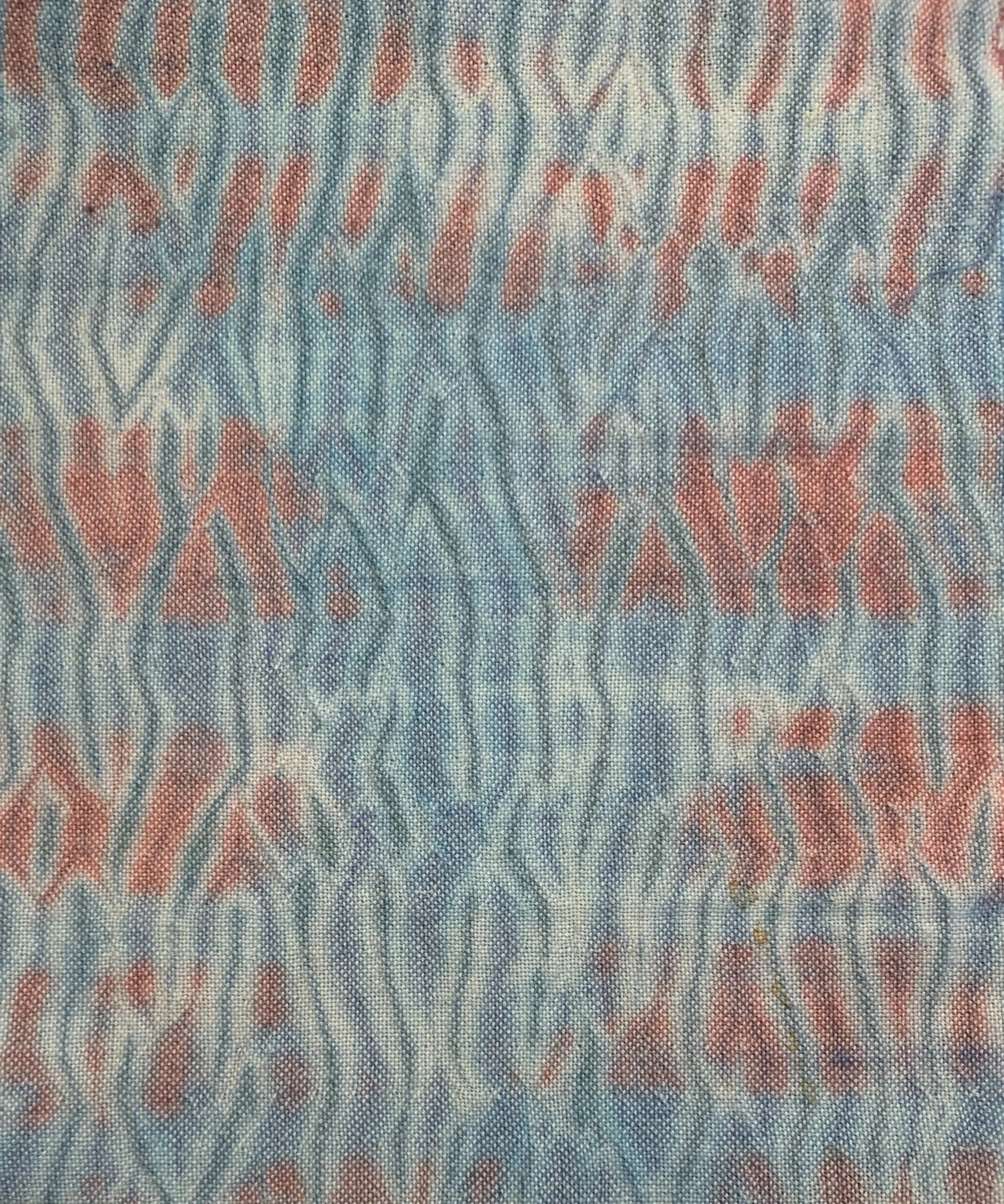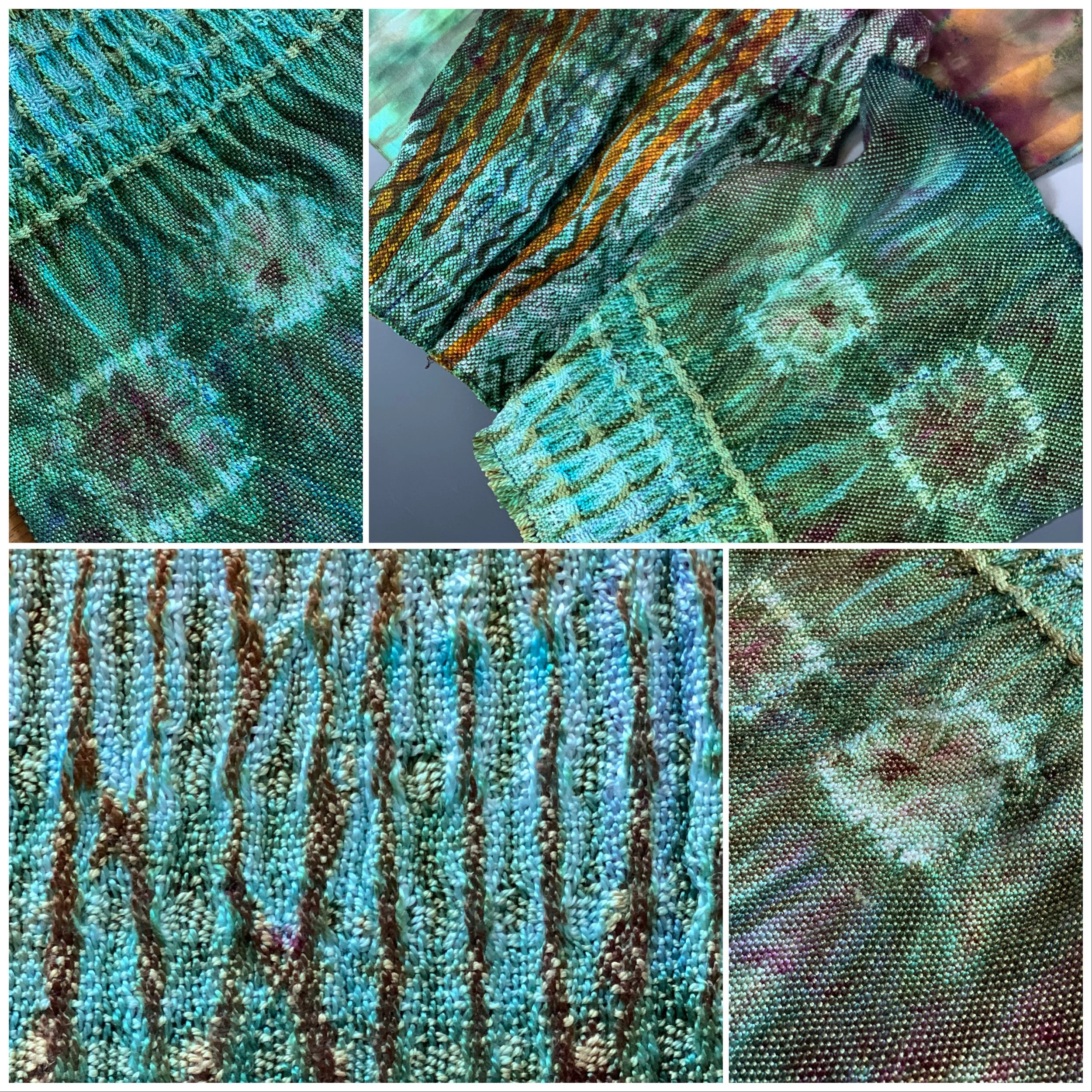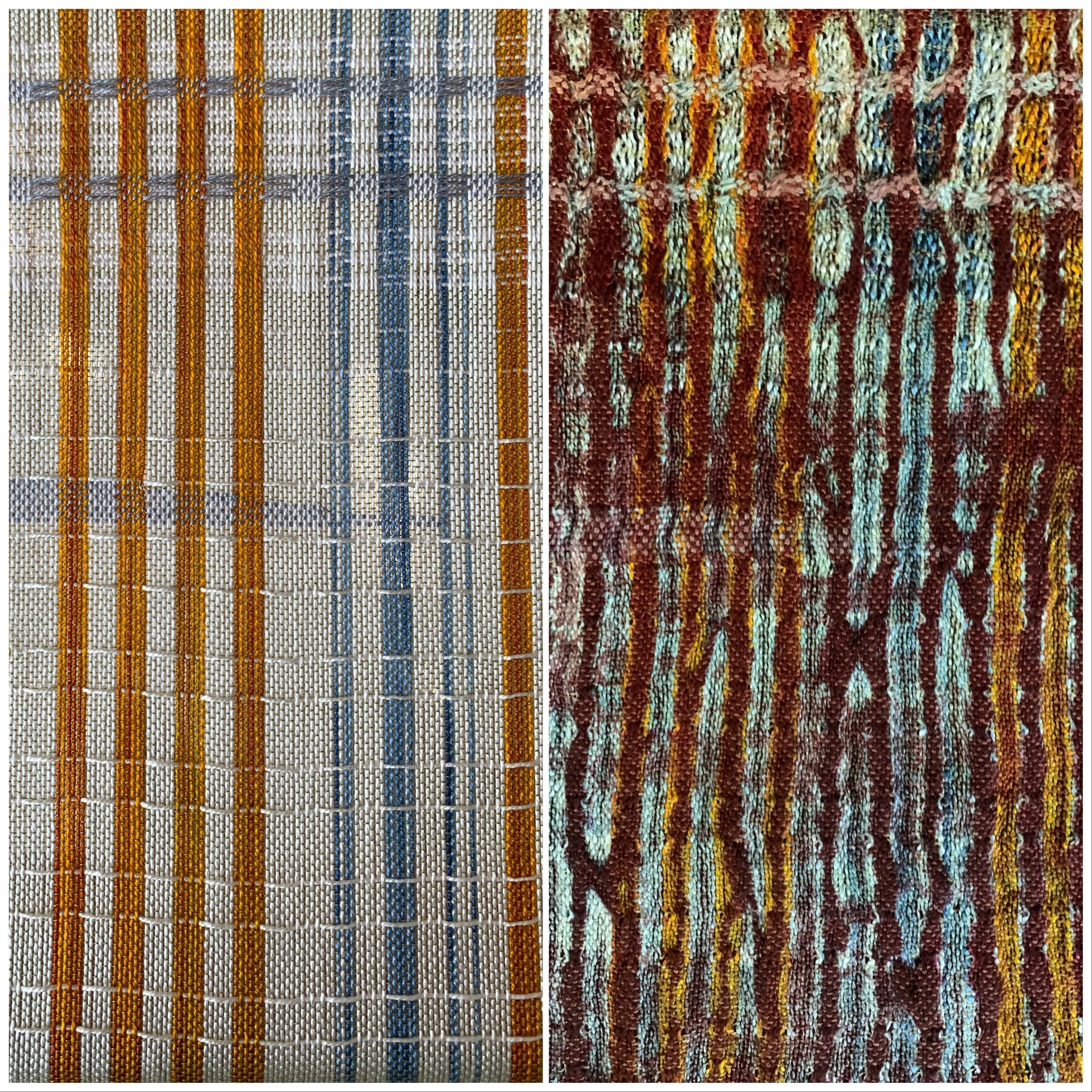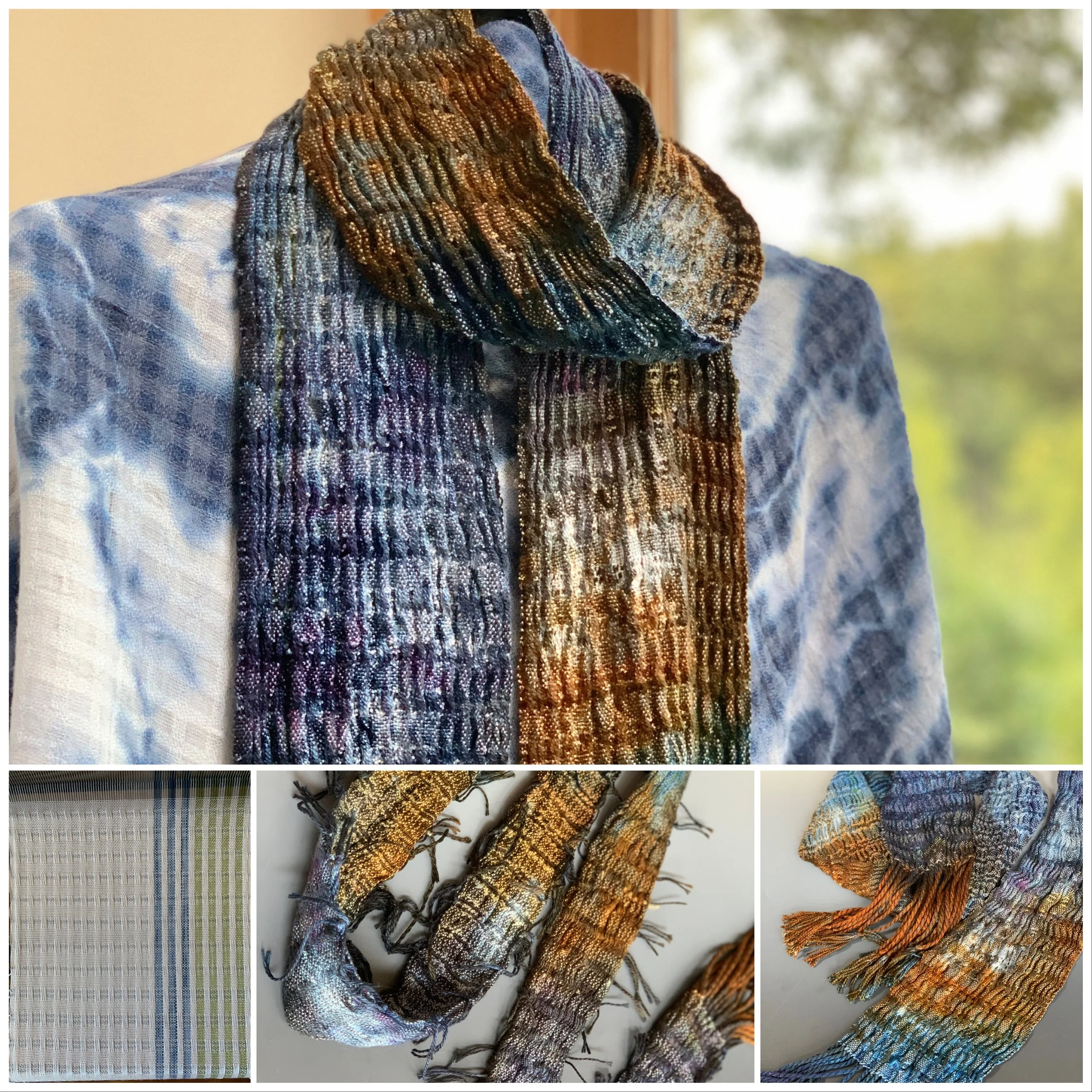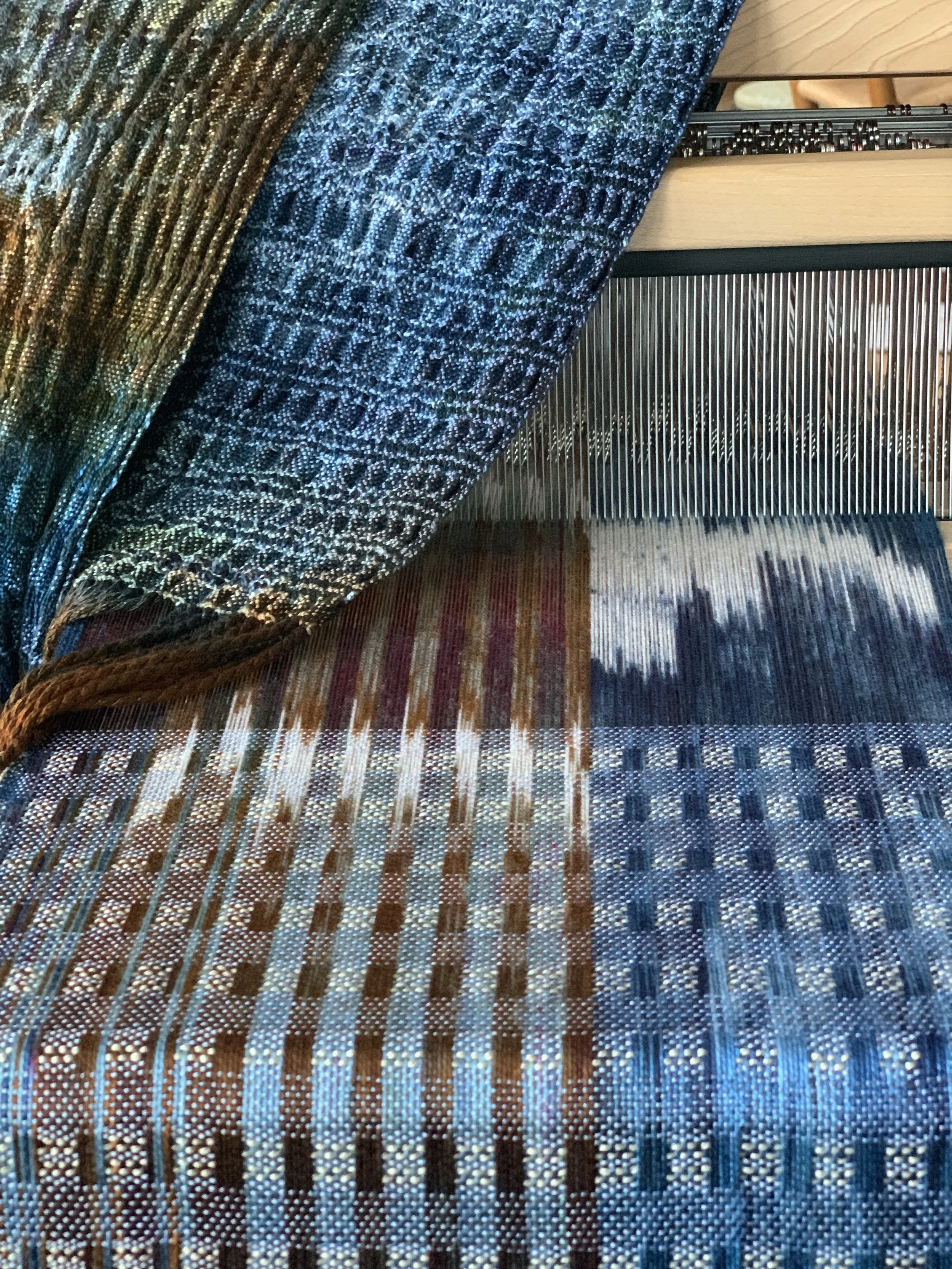Woven Shibori creates new learning
After visiting Catharine Ellis’ studio last year and reading her book Woven Shibori Revised and Updated, I fell in love with the patterns left behind on the woven cloth. Surface Design on cloth became popular in the late 1960s and early 1970s with tie-dye and batik. It is defined as “the coloring, patterning, structuring and transformation of fabric, fiber, and other materials.” The Dyer’s Art: Ikat, Batik, Plangi (1976) by Jack Lenor and Larson led to the formation of the Surface Design Association. Subsequent reading of Complex Cloth (1996) by Jane Dunnewold and a six week course fueled my further learning and creativity with surface design on fabric. Resist dyeing is all about creating surface design in your weaving!
“Woven shibori is a process of weaving and resist” that Catharine Ellis has developed since 1990. The roots of woven shibori lie in a “traditional stitched shibori pattern called mokume, or wood grain”. Stitched shibori uses the running stitch sewn by hand. These stitches are later gathered tightly by hand to create folds which serve as a resist. Nui Shibori is one of the traditional Japanese resist dye techniques. Designs may appear light and dark across the fabric. In 2017, I had my first experience in creating Nui Shibori to produce mokume using a woven blank.
Nui Shibori sample made at Midwest Weavers Conference, Indiana 2017
Natural dyed
Catharine indicates that any woven structure made of plain weave ground and floats on the surface is suitable for weaving Shibori. I was eager to sit down to the loom and create a woven shibori with deflected doubleweave threading and treadling variations. Sampling on the loom is my way of testing before writing a new draft or instructions. I found I like some samples better than others of course!
Deflected Doubleweave Variation
Mokume Shibori on face of cloth with warp floats and weft floats of 20/2 silk on back
Overdying using my ice dye methods as well as cross dyeing became a focus of the study as well. I’ve previously demonstrated cross dyeing using silk and tencel warps in the same dye tub on zoom classes. Both tussah silk and mulberry silk will take the fiber reactive dyes but behave differently resulting in much lighter values than tencel or cotton. I am fascinated by rust dyeing and was attempting to create a rust color palette on the sample above. A variation of this sample treadling at the top led to another experiment.
I’ll publish my drafts with further learning this fall as part of my Ice Dyeing Monograph. I’ve got a few more samples in the dye tub with a similar palette. The Ice Dye Monograph focuses on color palettes using two different ice dyeing methods.

